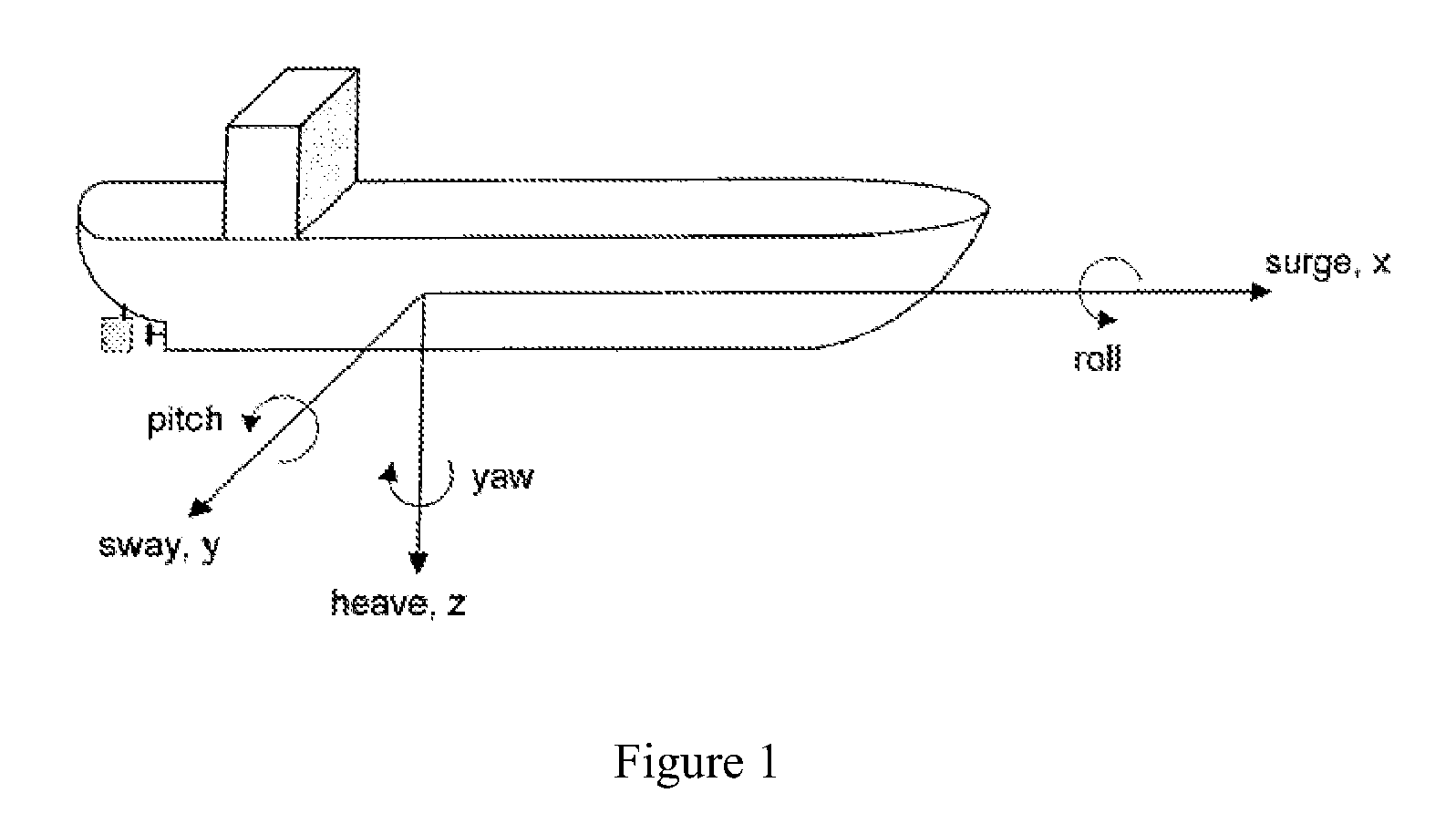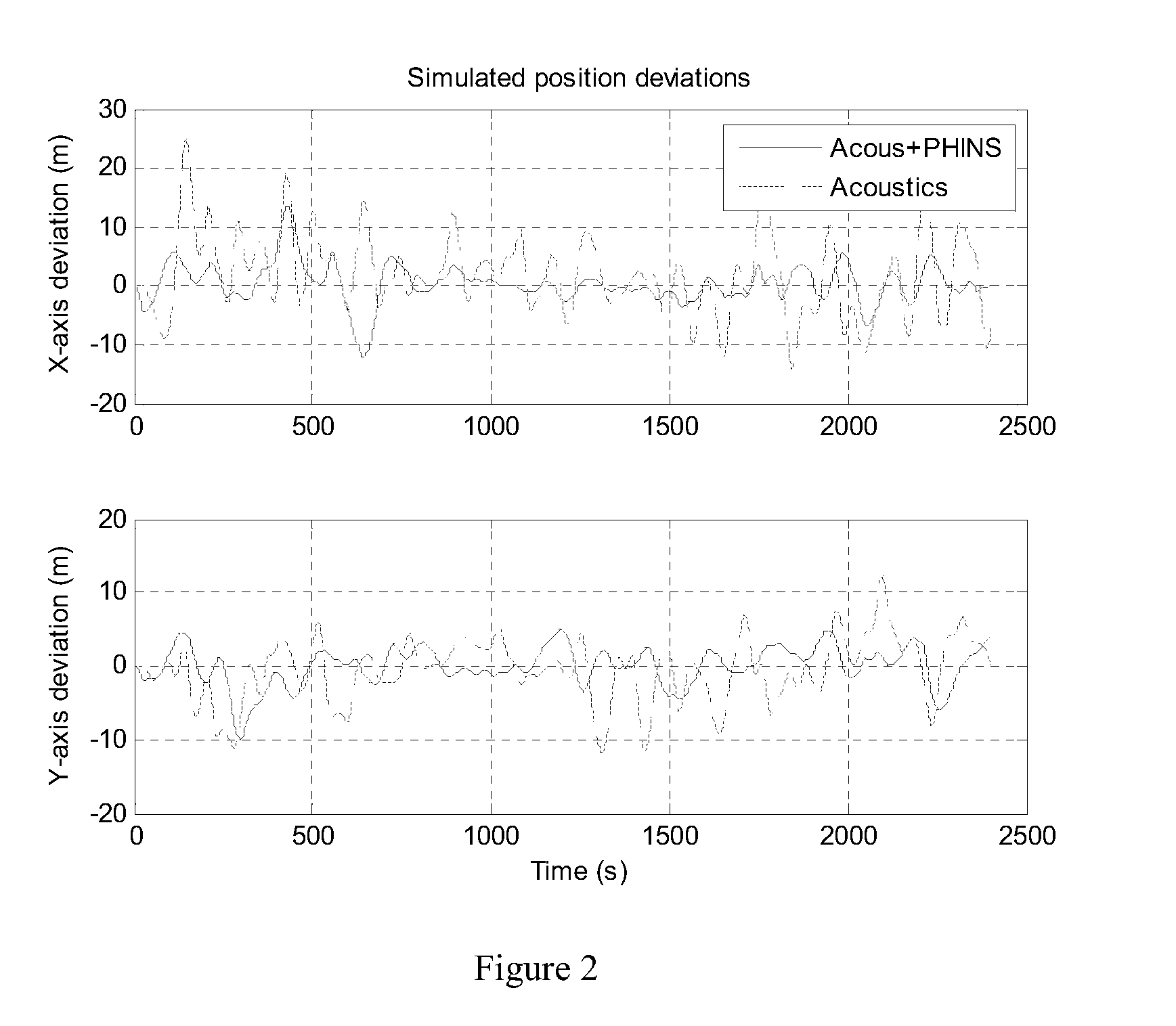Dynamic positioning architecture
a positioning architecture and dynamic technology, applied in the direction of steering initiation, navigation instruments, instruments, etc., can solve the problems of increasing the cost of transceiver battery replacement, affecting the safety of personnel or equipment, and the degree of drift on position measurements will always be present, so as to optimise the overall dp system
- Summary
- Abstract
- Description
- Claims
- Application Information
AI Technical Summary
Benefits of technology
Problems solved by technology
Method used
Image
Examples
Embodiment Construction
[0071]An improved architecture for a DP system 1 will now be explained with reference to FIGS. 12 and 13.
[0072]A DP system 1 includes a Kalman filter 2 to combine data to estimate a vessel's position and heading and dynamically control them. The output of the Kalman filter 2 is supplied to a vessel control unit 4 that outputs a signal to the thrusters (not shown) to cause them to bring the position of the vessel closer to a desired reference position.
[0073]The data is supplied by a plurality of position measurement equipment (PME) units (not shown) located on the vessel. Two PME units are of the same type (e.g. satellite navigation systems using GPS or DGPS) and the data they supply are labelled PME1 (type 1) and PME2 (type 1). Another two PME units are also of the same type (e.g. hydro-acoustic positioning systems) and the data that they supply are labelled PME3 (type 2) and PME4 (type 2).
[0074]An inertial navigation system (INS) unit 6 is integrated with the DP system. The INS uni...
PUM
 Login to View More
Login to View More Abstract
Description
Claims
Application Information
 Login to View More
Login to View More - R&D
- Intellectual Property
- Life Sciences
- Materials
- Tech Scout
- Unparalleled Data Quality
- Higher Quality Content
- 60% Fewer Hallucinations
Browse by: Latest US Patents, China's latest patents, Technical Efficacy Thesaurus, Application Domain, Technology Topic, Popular Technical Reports.
© 2025 PatSnap. All rights reserved.Legal|Privacy policy|Modern Slavery Act Transparency Statement|Sitemap|About US| Contact US: help@patsnap.com



